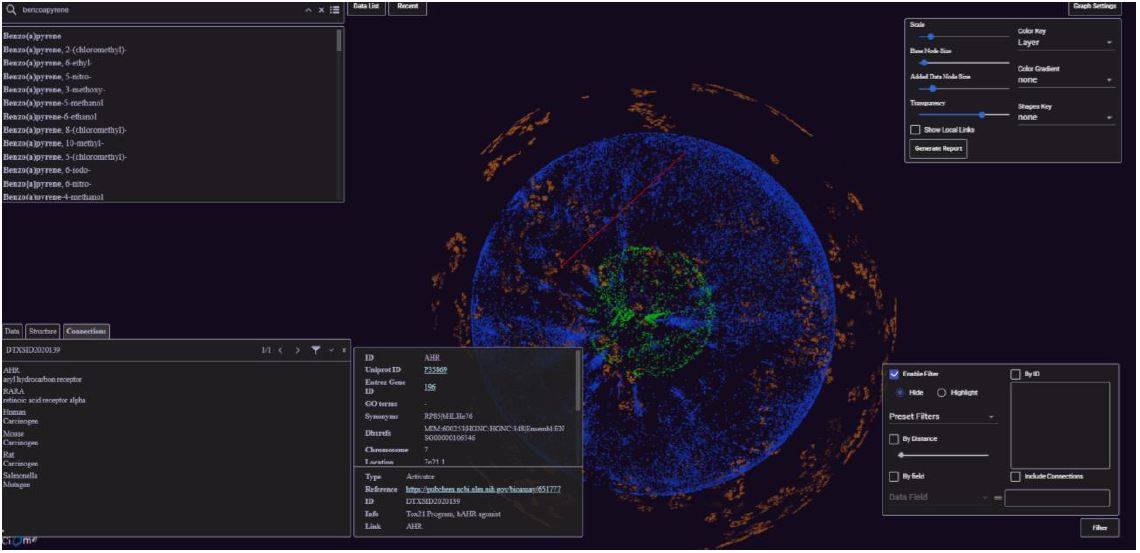The 10th Annual Meeting of the American Society for Cellular and Computational Toxicology (ASCCT), being held virtually from October 12-14, aims to promote toxicology testing and research that reduces and replaces the use of animals. As part of this meeting, Dr. Vijay Gombar will highlight recent work on OrbiTox, an interactive 3D visualization and analysis platform for varied scientific big data with special emphasis on predictive toxicology. To enable translational discovery via a collective view of data from different domains and their interrelationships, OrbiTox projects high-dimensional multi-domain data in concentric 3D layers. The Chemistry layer contains ~800,000 substances with structure, Tox21 qHTS, mutagenicity, and carcinogenicity data. Approximately 25,000 fully annotated human genes and 2000 pathways with functional annotation are populated in the Gene and Pathway layers. The Species layer contains data such as genus, family, class, life span, average weight, etc.,on species on which toxicity tests have been done.
Additionally, OrbiTox offers 41 QSAR models for Tox21 assays and models for predicting bacterial mutagenicity with and without metabolic activation in OECD-compliant strains. These models provide chemistry-backed reasoning for prediction based on Saagar – our recently published set of new 834 molecular features (Sedykh et al. 2021). This unique arrangement of experimental and predicted data and connections made across data domains enables knowledge extraction previously very onerous.

